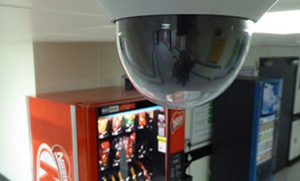Fire Alarm Installation
Fire alarms play a crucial role in fire safety, serving as the primary method for alerting individuals in the event of a fire. As a result, it is essential that fire alarm installations are conducted by qualified professionals, such as ClearView, who hold prestigious certifications like NSI Gold Fire and BAFE SP203-1..
fire detection
Protecting Your Organisation with Fire Alarm System Installation
Fire poses a significant threat to organisations, making it crucial to install a reliable fire alarm and smoke detection system to protect your staff and premises.
ClearView designs all fire alarm systems according to the relevant BS5839-1 standard, offering comprehensive design, installation, maintenance, and commissioning for all categories of fire alarm detection. We collaborate with you to establish a Fire Risk Assessment that specifies the system’s required category based on your risk.
Additionally, ClearView can conduct fire risk assessments to identify potential fire hazards and ensure the most appropriate measures are in place to minimise the risk of injury or fatality.
Why Choose Clearview as Your Fire Alarm Installer?
Clearview is a highly certified and experienced fire alarm installation company, committed to delivering excellence in design, installation, commissioning, and maintenance.
Our accreditations include BAFE SP201, Fire Industry Association membership, International Fire Consultants certification, FPA membership, NSI Gold Certification, CHAS, and Constructionline Gold Certification.
The Importance of Fire Alarm Systems – Why do I need one?
Fire alarm systems are vital for ensuring fire safety and meeting legal requirements set by the Regulatory Reform (Fire Safety) Order 2005 in the UK. This legislation mandates the need for fire alarm systems, fire doors, fire extinguishers, and emergency lighting for organisations with five or more full-time employees.
Conducting a fire risk assessment is crucial to identifying potential hazards and establishing appropriate measures. Failing to do so could lead to prosecution and invalidated insurance policies.
Benefits of Fire Alarms and Smoke Detection Units
Installing a fire detection system to BS5839 standards reduces the risk of injuries, fatalities, and financial losses. Benefits include meeting legal and insurance obligations, preventing damage to your premises, ensuring staff safety, providing early detection of potential fires, and reducing rates on building insurance.
British Standard for Fire Alarm Installation: BS 5839-1:2017
This code of practice outlines recommendations for the planning, design, installation, commissioning, and maintenance of fire alarm systems in commercial establishments. Compliance with this standard and the Regulatory Reform (Fire Safety) Order 2005 is mandatory.
Clearview is certified to install and maintain various fire alarm systems, including:
- Wireless fire alarms
- Conventional fire alarms
- Addressable fire alarms
- Linear heat detection
- Beam detection
- Aspirating fire alarms
Fire Alarm Installation Regulations and Protocols
The Regulatory Reform (Fire Safety) Act 2005 mandates reasonable measures to reduce fire risks and ensure safe escape during a fire. BS5839-1 provides recommendations for fire detection and alarm systems in commercial premises. Fire alarm systems require programming and access to appropriate software and training.
There are three types of fire alarm protocols:
- Open protocol: Allows anyone to buy software and obtain spares.
- Managed protocol: Manufacturers appoint approved installers and maintainers, ensuring systems are set up correctly while giving clients a choice of pre-approved installers.
- Closed protocol: Only manufacturers can use the software, limiting the end-user to manufacturer-provided maintenance.
Life Safety Systems
| Typical Category of System | Description |
|---|---|
| M | This solely relies on the building occupancy discovering the fire and sounding the alarm by operating the system. This would be by manual call points at exits or in corridors in which you travel no more than 45 meters to find one. This category is for the protection of life and should not be used if anyone sleeps inside. |
| P1 | This would require installation throughout the building – the intention being to notify the fire brigade as soon as possible to ensure that any damage caused by fire is minimised. This category system is for building insurance protection purposes. |
| P2 | Protection needs to be provided in areas of high risk of fire or where disruption should be minimised. This category is also for building insurance protection purposes. |
| L1 | Category L1 systems provide cover to the whole building with only minor exceptions. This is for the protection of life and should give the earliest possible warning to the occupants/users. |
| L2 | Category L2 system is designed for the protection of life. Detection should cover all escape routes and rooms that lead to an escape route. This is an L3 Category but with the addition of installing detection in areas of high risk of fire (e.g. kitchen). |
| L3 | Category L3 system is designed for the protection of life. Detection should cover all escape routes and rooms that lead to an escape route. This system provides the earliest possible warning to occupants before the fire escape routes become impassable. |
| L4 | A category L4 system is designed to provide an early warning of smoke in corridors. Detection will be placed in the escape route, although this may not be suitable depending on the risk assessment or the size/complexity of the building. |
| L5 | This category is used when special requirements can't be met by the other categories. This makes this category custom. I.e. electrical substation which is protected by an extinguishing system triggered by automatic detection. |
What are the legal requirements for commercial fire alarm installation in the UK?
The Regulatory Reform (Fire Safety) Order 2005 requires businesses to conduct a fire risk assessment and implement suitable fire safety measures, including fire alarm systems, to ensure the safety of occupants.
Compliance with British Standard BS 5839-1:2017 is expected for the design, installation, commissioning, and maintenance of fire alarm systems. For more information, visit the official UK Government page on fire safety in the workplace: https://www.gov.uk/workplace-fire-safety-your-responsibilities
What types of fire alarm systems are suitable for commercial properties?
There are various types of fire alarm systems suitable for commercial properties, including conventional, addressable, wireless, linear heat detection, beam detection, and aspirating fire alarm systems.
The appropriate system depends on the size, layout, and specific fire risks of the property. For more information on different fire alarm systems, visit: https://www.fia.uk.com/guides-downloads/guides.html
How do I choose the right fire alarm system for my commercial building?
To choose the right fire alarm system for your commercial building, start by conducting a fire risk assessment to identify potential hazards and the specific needs of your property.
Consult with a professional fire alarm installer to help you understand the available options and select a system that best suits your requirements.
What is the usual process for installing a fire alarm system in a commercial property?
- Fire risk assessment to determine the appropriate fire alarm system category.
- Design of the fire alarm system layout according to BS 5839-1:2017.
- Installation of the chosen fire alarm system by a certified installer.
- Commissioning and testing of the system to ensure proper functionality.
- Regular maintenance and inspection of the system to maintain optimal performance.
How often should a commercial fire alarm system be inspected and maintained?
Commercial fire alarm systems should be inspected and maintained regularly to ensure they remain in proper working order. As per BS 5839-1:2017, a qualified person should carry out a visual inspection of the system weekly, and a more thorough inspection and servicing should be performed by a competent person at least every six months.
What are the costs associated with installing and maintaining a commercial fire alarm system?
The costs of installing and maintaining a commercial fire alarm system vary depending on factors such as the size and complexity of the property, the type of system chosen, and the specific requirements of the installation. It’s essential to consult with a certified fire alarm installer to obtain an accurate quote for your specific property. For an overview of typical fire alarm system costs, please get in touch using the form.















